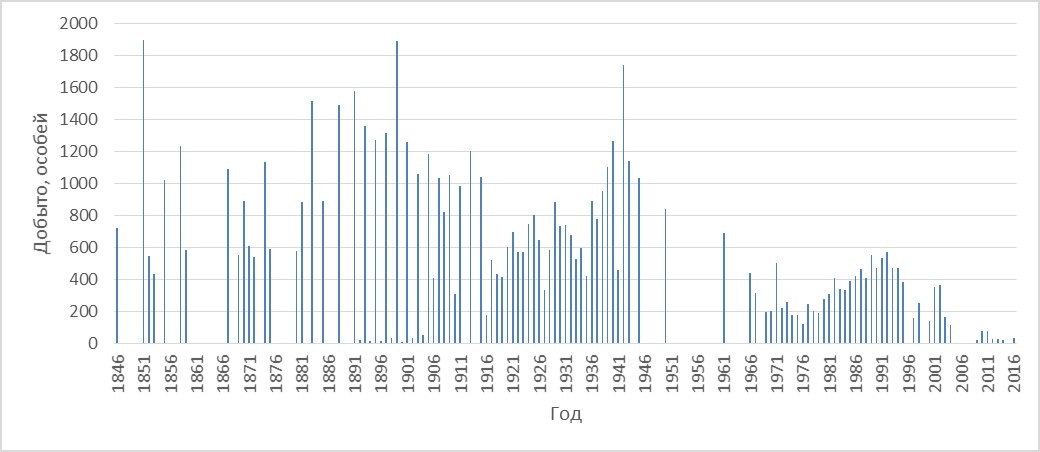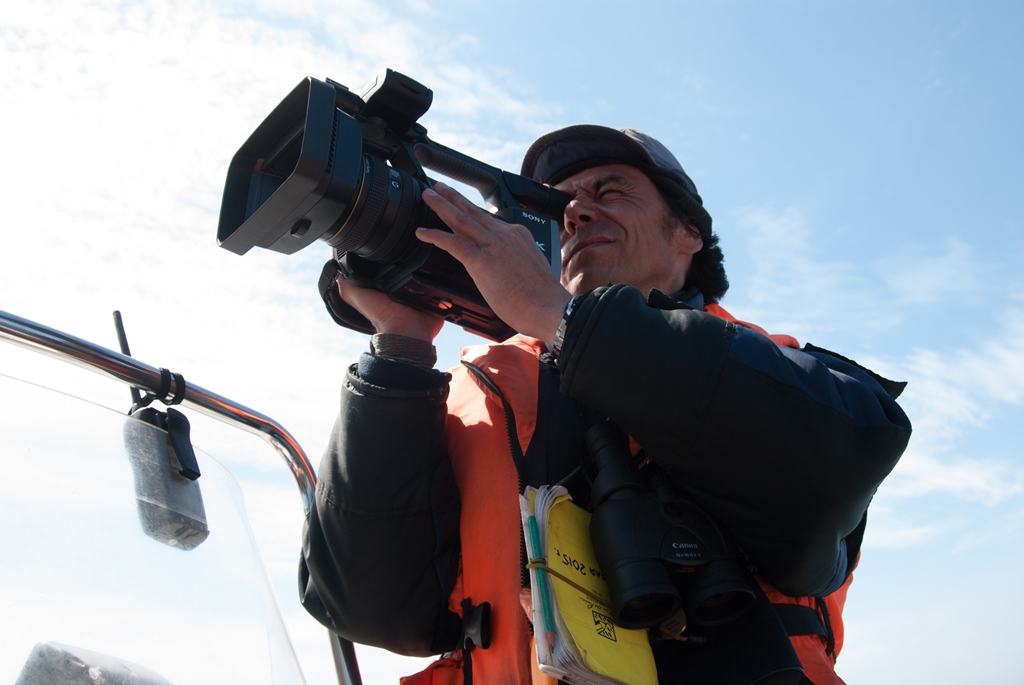After separating from the main population tens of thousands years ago Medny and Bering Island arctic fox subspecies inhabited the islands long before humans. Scientists believe they are the key element of local ecosystems. Arctic foxes are the real aboriginals of the islands. The islands were discovered by humans in 1741 and harvesting activity began. It changes the lives of the animals. The research team of the reserve tried to understand how the population changed throughout the period from discovery of the islands till today and to see the future.
That is why the scientists developed a mathematic model, which processes the data of yearly counts.
The model was developed by IT specialist and PhD in Technology Anastasia Panphilova. She came to work in the Science Department as a volunteer. “This research is quite unique, as it is based on real data. The two subspecies are lucky – they are the only carnivorous on the islands and do not have competition for food. The Commander Islands are rather isolated from the world around, so there are no rapid fluctuations of numbers of animals, which are the food base of the animals. And the arctic foxes are living permanently on the islands. So we have very comfortable circumstances for mathematic modeling”, said Anastasia Panphilova.
Anastasia Panphilova, the developer of the mathematic model
Our model is based on the differentiated model, describing the process of change in a population combined with data on habitat capacity – a number of factors, restricting growth of a population. Anastasia upgraded the model on the basis of birth and death data among young and adult arctic foxes and used it separately for Bering Islands and Medny Island arctic foxes.
As a result the team discovered that in the mid 18th century, when the harvesting began, there were 5000 arctic foxes on Bering Island and habitat capacity – how much the island could sustain - was more than 7000. Human activity made considerable changes in the ecosystems of the islands: Steller sea cow was killed out, fur seal and sea otter populations decreased. The consequences couldn’t avoid Bering Island arctic foxes. According to the model, today the island can sustain only 1400 individuals and in 2022 the number will be even smaller – 800 individuals.

Dynamics of arctic fox harvesting on Bering Island
On Medny Island we have a different situation. Initially in the mid 19th century the island has about 1000 individuals with habitat capacity of 6000. When humans came, as they lived and hunted on the island for a long time, the capacity decreased to 2250 and the model predicts that in 2022 we will find only 190 individuals there.
“The reserve has long planned to model the insular populations of arctic foxes and finally we managed to find the volunteer, who has all the necessary skills to process mathematically all the data. We used data collected from many sources, such as scientific publications, historic documents, scientific reports and archives. As a result the reserve found information about arctic fox populations on the two islands in some of the years together with data on hunting rates, birth and death. It is worth mentioning that for the two populations we have long rows of data about hunting rates and not much info on numbers. Actually countings of arctic foxes started only in the 20s of the 20th century. We did our best to find every bit of information possible, which is essential for modeling and for the results to be closer to reality. I believe that the model works well, we have interesting results and we will prepare the materials for publication”, said Evgeny Mamaev, Deputy Director for Science.

Evgeny Mamaev, Deputy Director for Science.
This research is a part of a long process to discover the details of lives of arctic foxes on the Commander Islands. It is a project, which combined work of many generations of researchers.









